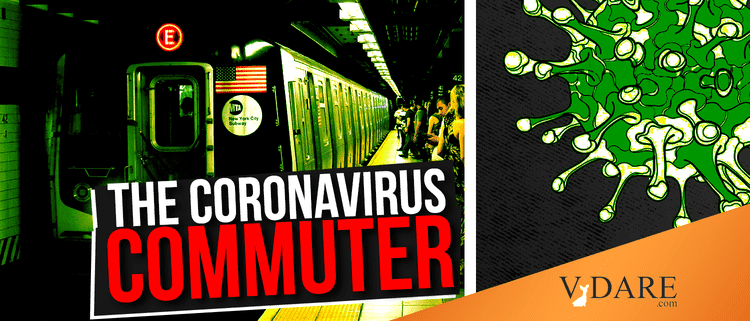A new paper by an MIT economist:
The Subways Seeded the Massive Coronavirus Epidemic in New York City
Jeffrey E. Harris*
Department of Economics
Massachusetts Institute of Technology
[email protected]
April 13, 2020Abstract. New York City’s multitentacled subway system was a major disseminator – if not the principal transmission vehicle – of coronavirus infection during the initial takeoff of the massive epidemic that became evident throughout the city during March 2020. The near shutoff of subway ridership in Manhattan – down by over 90 percent at the end of March – correlates strongly with the substantial increase in the doubling time of new cases in this borough. Maps of subway station turnstile entries, superimposed upon zip code-level maps of reported coronavirus incidence, are strongly consistent with subway-facilitated disease propagation. Local train lines appear to have a higher propensity to transmit infection than express lines. Reciprocal seeding of infection appears to be the best explanation for the emergence of a single hotspot in Midtown West in Manhattan. Bus hubs may have served as secondary transmission routes out to the periphery of the city.
Is there much of a Plan B for getting around NYC without the subway? NYC’s giant subway system is a hugely valuable resource most of the time, but precisely because so many people are dependent upon it that it becomes an anchor during epidemics.
The Metropolitan Transit Authority’s decision to cut back its train service to accommodate the reduced demand may have indeed helped to shore up the agency’s financial position, but it most likely accelerated the spread of coronavirus throughout the city. That’s because the resulting reduction in train service tended to maintain passenger density, the key factor driving viral propagation (Goldbaum and Cook 2020). How ironic it is that, from the public health perspective, the optimal policy would have been to double – maybe even triple – the frequency of train service. The agency’s decision to convert multiple express lines into local service only enhanced the risk of contagion (Goldbaum 2020). How ironic it is that the preferred policy would have been to run even more express lines. We have not seen any public data on the incremental cost of the agency’s decision to begin to disinfect subway cars twice daily. Still, it is natural to inquire why the cars weren’t disinfected every time they emptied out of passengers at both ends of the line.
A crucial question is how much good could universal masking do for the subway system?
By the way, how many examples have we had yet of criminals using face masks to get around facial recognition cameras? Do banks let you come in the door wearing a mask? When I walk in my bank, an employee almost always greets me effusively. This is has a dual benefit in cutting down bank robberies: it inclines entrants to lift their faces up where a camera can record them, and it seems to discourage bank robbers. Apparently, a lot of would-be bank robbers chicken out at the last moment, and a friendly smile can be the nudge they need to keep walking.













